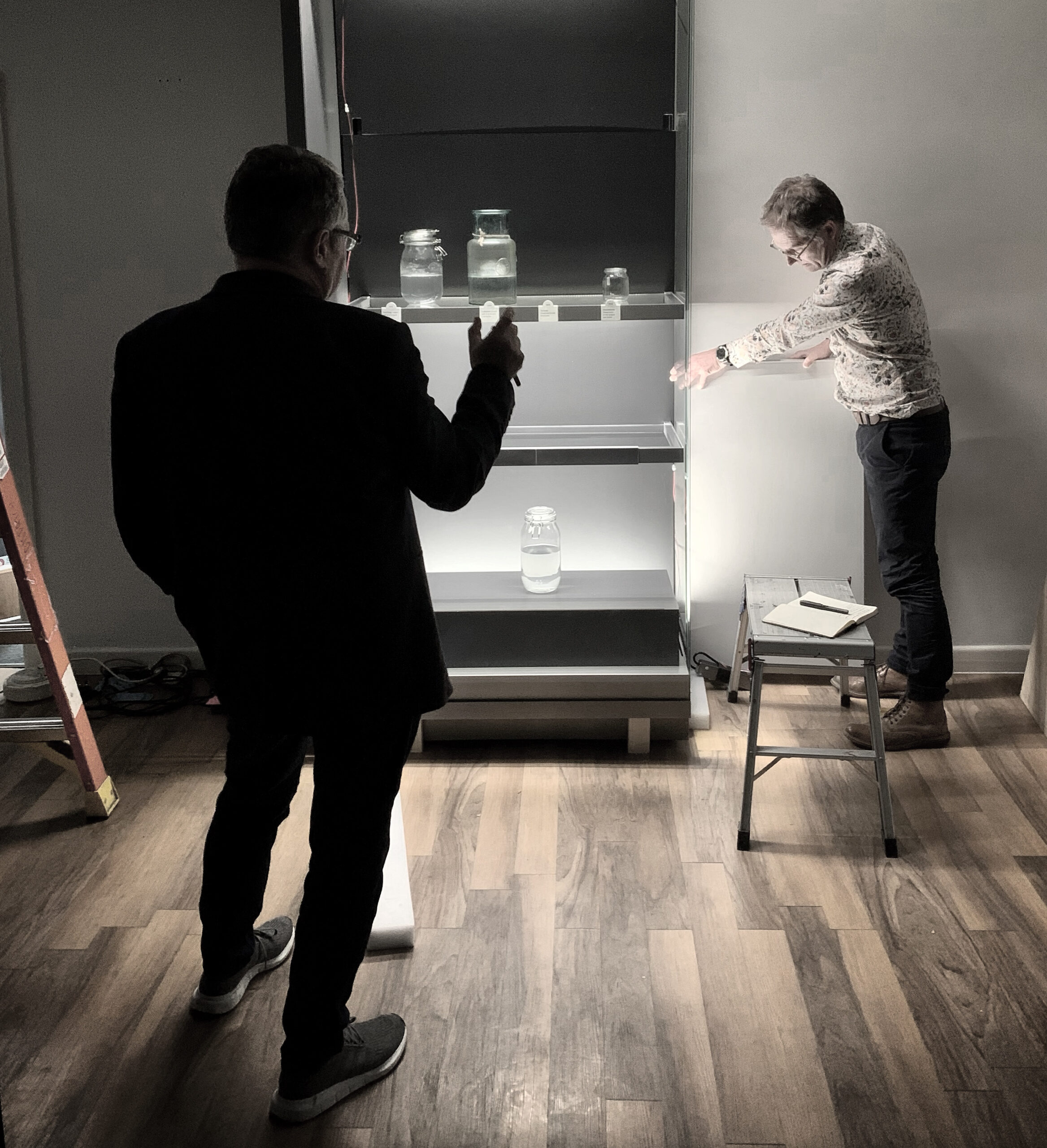
When creating bespoke lighting systems for display cases, then a physical mock-up – as intensive and time-consuming as it will be – is an absolutely necessity for the best results.
Jonathan Howard recently travelled – in a Covid-safe manner, naturally – with designers from Casson Mann to the factory of Click Netherfield in Livingston, just outside Edinburgh. The aim was to test and refine the lighting in some key display cases for a new museum, opening in London in 2022.
Not only will the cases be built mainly from glass, but the contents of each case will be a variety of samples and specimens, all displayed in liquid-filled glass jars: with so many reflective and refractive surfaces in use, it becomes easy to see why only a mock-up could cope with the many variables and methods in play: lighting all of the objects to give them a suitable weight and clarity when they need to be limited in light levels, while making sure that labels and graphics are very clearly illuminated is quite a feat of engineering and one that has been occupying us in the recent months.
Separation of light levels between graphics an objects has been developed using a combination of very narrow beam angle LED fixtures by Vexica, with a series of masking elements developed by Jonathan & Click’s designers, which has meant that we can achieve light levels of over 200 lux on a graphic that is merely millimetres from a shelf that is lit to a maximum of 50 lux; this separation will allow visitors to read small text easily, while not suffering with visual accommodation problems when they look past to the objects themselves, displayed at conservation light levels that will protect their organic content. As the source of the light is masked from view, we cut extraneous reflections and glare that could easily make the multiple glass and metal surfaces become their own light sources and a source of visual confusion.
The museum will not open until well into 2022, but this work needs to be carried out now to ensure that cases can be built in good time for transport and assembly on site, ready for the collection to be transferred to the finished gallery.